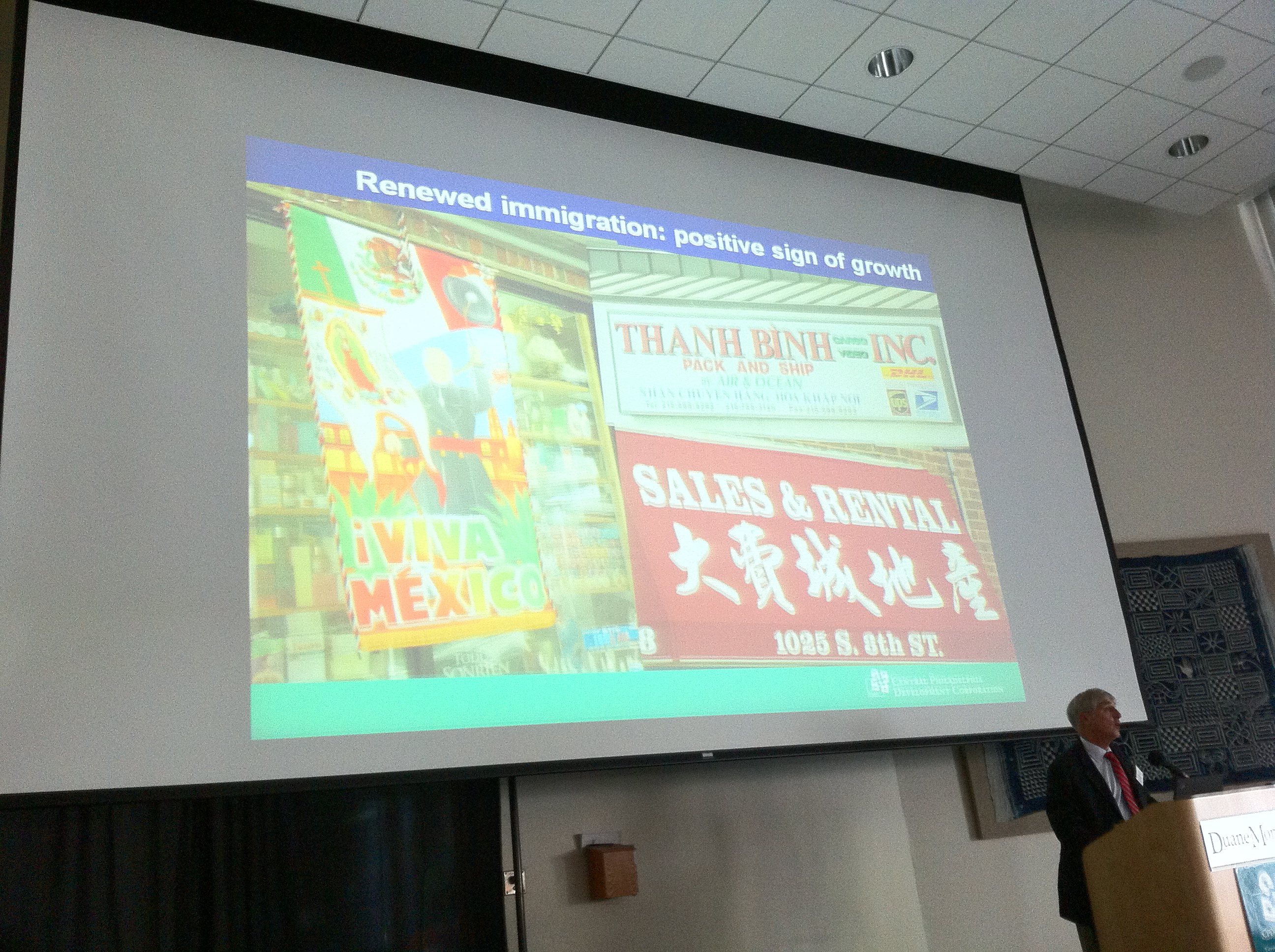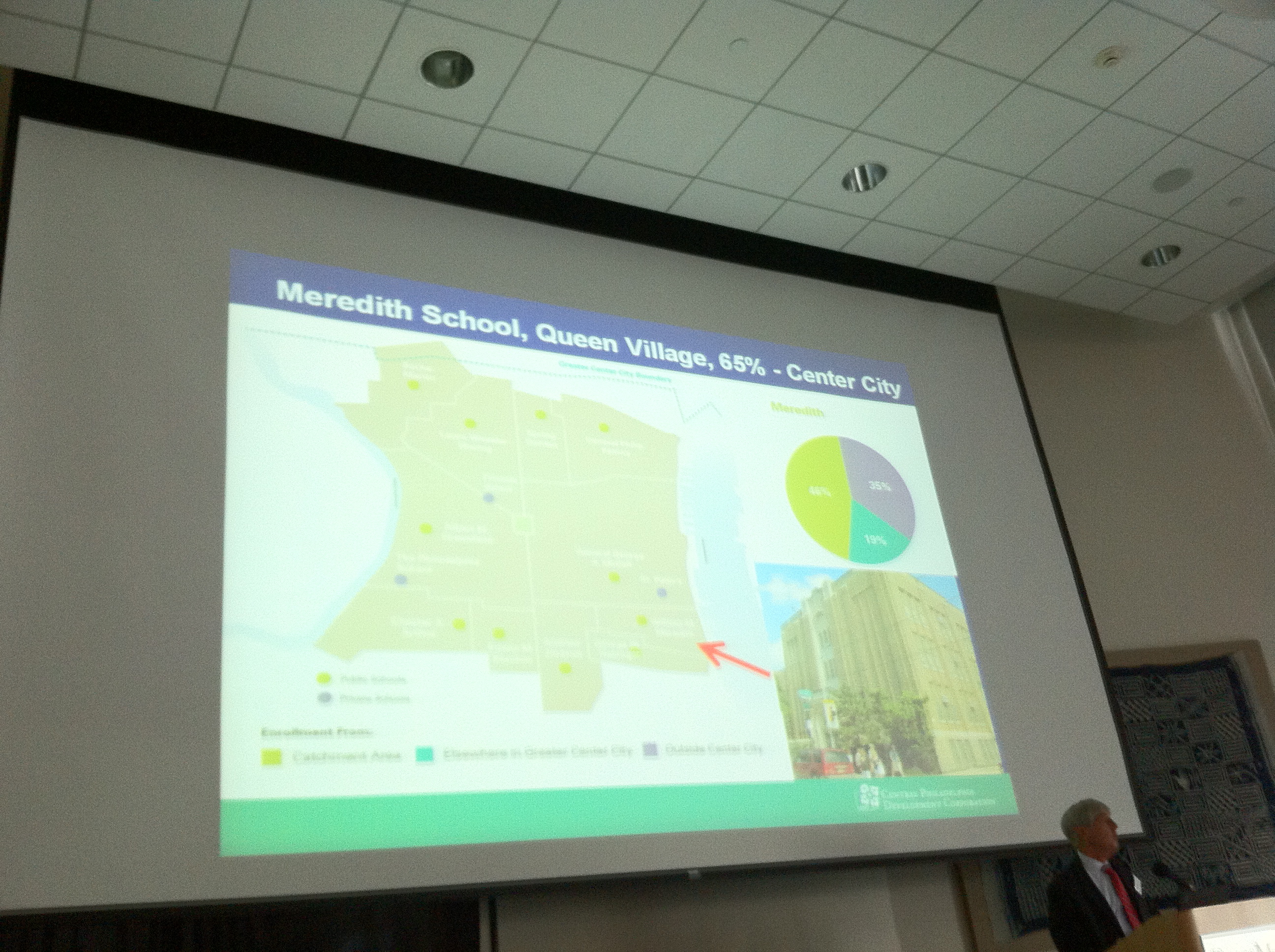Center City District offers close look at census numbers
Center City Development Corporation executive director Paul Levy named outgoing Councilman Frank DiCicco as a key contributing factor behind the good news that he delivered at the organization’s Meeting of the Membership early Monday evening.
In rallying around the idea of instituting a 10-year real estate tax abatement, DiCicco “triggered a whole new round of housing production that took us to a whole new level,” Levy said.
Besides the 12,000-plus new housing units that have come online downtown since then, Levy also cited several other factors behind census numbers that show a continued upswing in downtown residents. These include walkability and proximity to work, diverse cultural, entertainment and recreational offerings, a greater array of shopping and restaurants, and continued access to public transportation.
Levy defined what he now calls “Greater Center City” — a core that extends river to river from Pine to Vine streets combined with an extended map that marks Girard and Tasker as the northern and southern boundaries and includes not only bonafide “there” neighborhoods like Northern Liberties, Fairmount, Queen Village and Bella Vista, but emerging ones such as Point Breeze, Grays Ferry, and Passyunk Square.
Among the factoids Levy shared:
Greater Center City is the fastest-growing area in the city, showing a 10.2% increase in population since the 2000 Census. This 7.8- mile section of the city is now home to just under 180,000 people. The core neighborhoods experienced even more dramatic growth, rising by 16.3% in the last decade.
This total is 54% Caucasian, 32% African-American, and 11% Asian. Although these communities have become neighborhoods of choice for the affluent (median household income of $51,329 as opposed to $39,352 citywide) and highly-educated (58% versus 22% for 25-34 year-olds), the area still contains more than 6,000 units of publicly subsidized housing. They are young, however: 41% are between 25 and 44 years old, as opposed to 28% citywide.
Not surprisingly, the numbers reveal that just over half (51%) of private sector jobs in the city are in Greater Center City and University City.
Of Greater Center City’s residents, some 38% walk to work, 21% use pubic transportation, and 4% bike. Twenty two percent are stuck in reverse commutes.
Despite the economic downturn, District analysis reveals that some 460 additional housing units are set to be online by the end of this year.
More than 20,000 children were born to parents living in these eight zip codes, with a 16% increase in school-age children in the core. The area’s three private schools receive more than 70 percent of their students from the catchment, while at Meredith School in Queen Village — which Levy cited as a model public school — draws 87% of the students who live in its catchment area.
Before summarizing, Levy urged his audience to recognize the “large opportunity” that the area’s public schools present in enticing those parents blessed with mobility and choice to continue to live downtown.
To cement his argument, he offered a chart showing that children currently under the age of 5 who now live in the catchment areas of the core’s three schools (along with Meredith, these are Greenfield and McCall) has grown by 66% since 2000. Because of the tremendous growth in the city’s Asian population, McCall catchment of 5-14 year olds has increased by 31.6 percent, with some 800 more pre-school age kids waiting in the wings, almost double what it was in the year 2000.
Those living in the catchments of the extended district (another 8 schools) have increased by 32%, reported Levy. Most significant on that list was Nebinger, whose catchment now houses 50% more pre-school age kids as it did in 2000, but which was recently placed on a list of possible school closings.
Contact the reporter at jgreco@planphilly.com and follow her on Twitter @joanngreco
WHYY is your source for fact-based, in-depth journalism and information. As a nonprofit organization, we rely on financial support from readers like you. Please give today.





